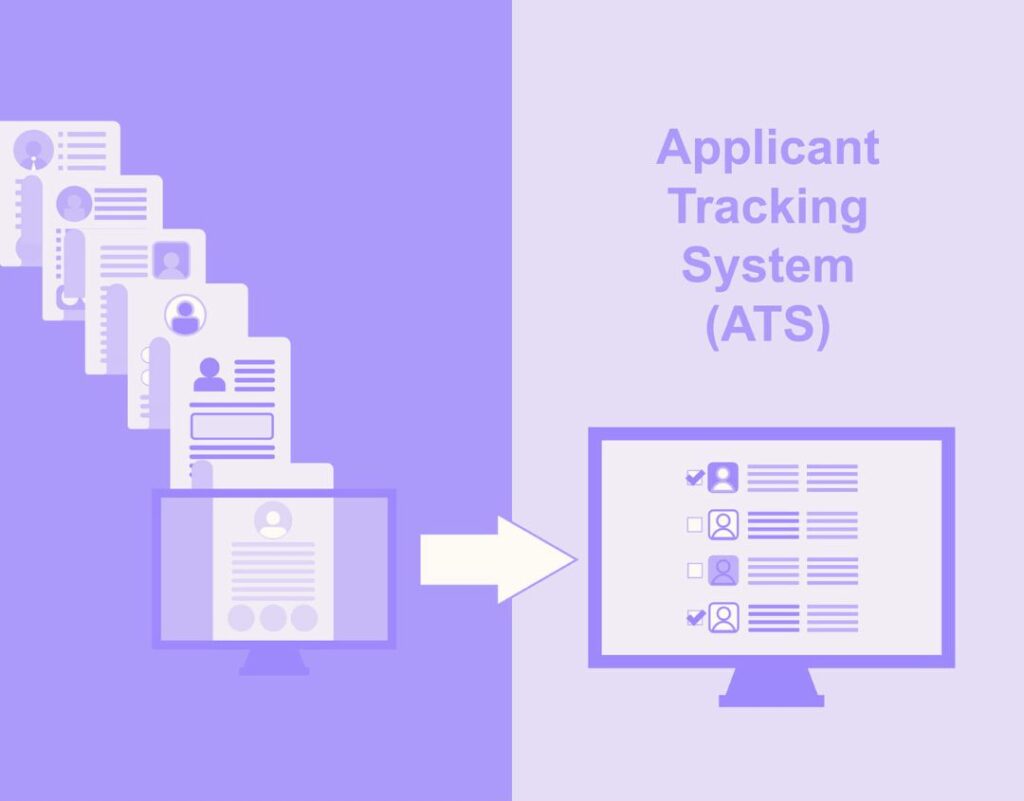5 min. read
Applicant Tracking Systems Explained
Beginner’s Guide including Tools, Tips, and Inclusivity Strategies
Setting up your Candidate Process and Applicant Tracking System?
In the world of talent acquisition, staying ahead of the curve is crucial.
One of the most transformative tools at your disposal is the Applicant Tracking System (ATS).
But what exactly is an ATS, and how can you leverage it to enhance your recruitment process, promote inclusivity, and avoid common pitfalls? Let’s dive in.
What is an Applicant Tracking System?
An Applicant Tracking System (ATS) is a software application designed to help organisations manage their recruitment processes efficiently. It automates the hiring process by managing job postings, sorting through resumes, tracking candidates throughout the recruitment cycle, and streamlining communication.
Why You Need an ATS
Efficiency & Speed
ATS can quickly sift through hundreds of applications, identifying the most qualified candidates based on predefined criteria.
Organisation
It keeps all candidate information in one place, making it easy to track their progress.
Improved Candidate Experience
Streamlined processes lead to quicker responses and a more positive experience for applicants. Learn more about how to set up your interview process.
Data-Driven Decisions
ATS provides valuable analytics and insights, helping you refine your recruitment strategy.
Setting Up Your ATS: The Basics
1. Define Your Needs: Before choosing an ATS, outline your recruitment needs. Consider factors such as company size, industry, and the volume of hires.
2. Choose the Right System: Research and compare different ATS solutions.
Popular options include Workday, Greenhouse, and Lever.
3. Customisation: Ensure the system can be tailored to your specific recruitment processes.
3. Integration: Check if the ATS integrates with your existing HR systems and tools.
4. Training: Provide comprehensive training for your HR team to ensure they can maximise the system’s potential.

Tools and Features to Look For
Discover which features exist, what they entail, and the benefits they offer.
Resume Parsing
It is the process by which an ATS automatically extracts relevant information from resumes and converts it into structured data. This includes details like contact information, work experience, education, and skills.
Benefits:
– Efficiency & Accuracy: Saves significant time by eliminating manual data entry.
– Speed: Quickly processes large volumes of resumes, enabling faster shortlisting of candidates.
Tools like Hiretual and Textkernel offer advanced resume parsing capabilities, integrating seamlessly with various ATS platforms to enhance data extraction accuracy.
Customisable Workflows
Tailor the recruitment stages to fit your specific hiring process. This includes defining steps such as initial screening, interviews, assessments, and final evaluations.
Benefits:
– Flexibility & Consistency: Adapts to the unique needs of different roles and departments. Ensures a uniform recruitment process across the organisation.
– Optimisation: Allows continuous improvement of recruitment stages based on feedback and outcomes.
Greenhouse offers highly customisable workflows, enabling recruiters to create bespoke hiring plans for different job roles and departments.

Analytics and Reporting
Access detailed insights into various recruitment metrics such as time-to-hire, cost-per-hire, candidate sources, and diversity statistics.
Benefits:
– Data-Driven Decisions: Helps refine recruitment strategies based on real-time data.
– Performance Tracking: Monitors the effectiveness of different sourcing channels and recruitment campaigns.
Workday Recruiting offers comprehensive dashboards and customisable reports to track every aspect of the recruitment process.
Candidate Relationship Management (CRM)
Focuses on nurturing relationships with potential candidates, similar to how customer relationship management systems work in sales.
Benefits:
– Engagement: Keeps potential candidates engaged through regular communication.
– Build Your Talent Pool: Builds a pipeline of qualified candidates for future openings.
Lever includes a powerful CRM module that helps manage candidate interactions, schedule follow-ups, and create targeted recruitment campaigns.
Accessible Applications
Ensure that your ATS is user-friendly for candidates with disabilities. This includes compatibility with screen readers, keyboard navigation, and providing alternative formats.
Benefits:
– Inclusivity: Makes job opportunities accessible to all candidates, regardless of disability.Enhances the overall experience for all applicants.
– Legal Compliance: Ensures adherence to accessibility laws and guidelines.
SmartRecruiters offers accessibility features to ensure that their platform can be used by candidates with varying needs, promoting a more inclusive hiring process.
Compliance Tracking
This ensures that the recruitment process adheres to legal requirements and internal policies. The aim of GDPR is to protect the privacy of UK (and EU) citizens from data breaches by putting in place a strict governance on the processing and storage of personal data. There are a number of key key points which must be considered whenever handling data, not limited to but including: Consent, Right to Access and Right to be Forgotten.
Benefits:
– Risk Mitigation: Minimises the risk of legal issues and fines.
– Fair Hiring: Promotes equitable and transparent hiring practices.
iCIMS offers compliance tracking features that help ensure your recruitment practices meet all necessary legal and regulatory standards.
Potential Pitfalls
While ATS offers numerous benefits, there are some challenges to be aware of:
– Over-Reliance on Automation: Automation can sometimes lead to overlooking potentially great candidates who don’t fit the typical mould.
– Bias in Algorithms: Ensure the ATS algorithms are regularly reviewed to prevent perpetuating any biases.
– Data Privacy: Be vigilant about data protection and privacy regulations.
– Data Input Quality: Be mindful to be strict with the team on which criteria to consider when adding or tagging candidates for future reference.
– Candidate Experience: An overly complex ATS can frustrate candidates. Keep the application process user-friendly.

Leveraging ATS for Inclusive Hiring
Creating an inclusive environment in tech and other industries starts with the recruitment process. Here’s how to use your ATS to promote diversity:
– Blind Recruitment: Anonymise candidate details to eliminate unconscious bias.
– Inclusive Language: Use the ATS to audit job descriptions for biased language. Discover how to create your own inclusive job descriptions.
– Diversity Metrics: Track diversity metrics to understand and improve your hiring practices. Learn how to measure DEI initiatives.
– Accessible Applications: Ensure the application process is accessible to candidates with disabilities.
The right combination of tools and features in an ATS can significantly enhance your talent acquisition strategy. Choose an ATS that aligns with your organisational needs and goals to maximise the benefits of these powerful tools.






